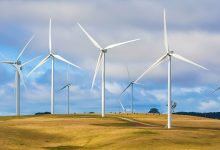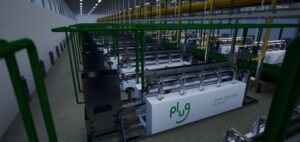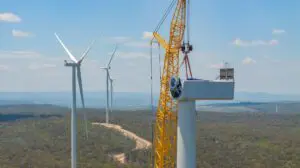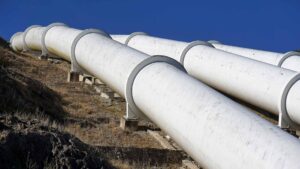Wind and solar developers will finally get the opportunity to see what their rivals are up to, and get some insight into potential logjams and congestion that could influence the return on their investments under new rules introduced by the Australian Energy Market Commission.
One of the biggest complaints of wind and solar developers and network operators alike, has been privacy rules that prevent information about project proposals being shared. Given that by some estimates more than 130GW of wind and solar projects are somewhere in the pipeline, this has created the real risk of over-crowding on some parts of the network.
This has already played out in the major downgrades of output because of network congestion under what are known as marginal loss factors. Multiple projects have also been told they had to spend tens of millions on new equipment such as synchronous condensers, when one installation might have been enough.
Not only do wind and solar project developers not have visibility of what rivals were up to, the people who can see what was going on, and the train-crash approaching – the network operators – are not allowed to tell anyone.
This has created bizarre and quite absurd situations where solar or wind project developers found themselves trying to connect to the same sub-station as other projects. They would then find – to the horror of their investors and financiers – that the local grid had become overloaded and their output, measured by marginal loss factors, would be severely restricted.
Congestion and train crashes
Worse, they could also be hit by added costs – sometimes in the tens of millions – for installing machinery such as synchronous condensers. Not only that, multiple projects would be required to install their own machinery, when one investment might have been enough to cover all their needs, because the networks won’t allowed to tell one project developer of what another group was up to.
Simon Taylor, the manager of network customers at Queensland’s Powerlink, pointed to the issue at a conference last year, where he described the situation where he might get half a dozen different developers coming into the office asking about connections to a promising part of the grid.
He knew that one development could fit in fine, but six would be an MLF and connection train crash. Yet he was unable to suggest they all get together and work it out, or even advise them of the competing projects, because the rules prevented him.
Transgrid pointed to the problem in a submission to the AEMC earlier his year, although this was more focused on their decree that all new project should “do no harm”. But Transgrid made the point that multiple project developers were obliged to invest in machinery in a way that was so haphazard that it would likely create more problems than it solved.
Transparency of new projects
Now, after months of review, the AEMC has made a final ruling “transparency of new projects” that will give developers better and more up-to-date information about what new generation projects are in the pipeline. It’s just one of a number of market reforms desperately needed to facilitate the transition tor renewable dominated grid.
“More than 50 gigawatts of new wind and solar projects are in development, which is roughly equivalent to the national electricity market’s entire current capacity,” says acting CEO Suzanne Falvi.
“The smooth entry of these new generators relies on developers having up-to-date information about where and when other developers are proposing to locate generators to help avoid traffic jams in generation.
“This may help businesses make better investment decisions on where to locate new generators and assess project viability.”
The new rule requires transmission businesses to share information about new generation projects, including size, location, technology and timing, with the market operator, AEMO.
This, in turn, will enable AEMO to publish more detailed, up-to-date data on proposed and existing generators on its generation information page on its website. This information will likely help project developers assess how marginal loss factors could change.
The Commission has set out an implementation timeframe that would enable the key changes to be implemented in stages by end January 2020, although AEMO says it may not be able to update its systems until April.
Still, some parties are worried that the information might not be enough, and some casual enquiries might get lumped in with reasonably advanced proposals. But at least now, it seems, everyone will be able to talk about it.










